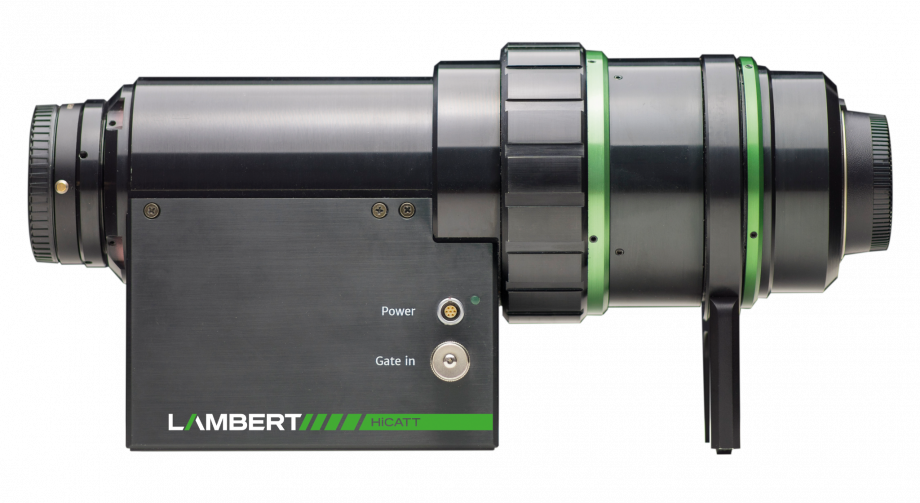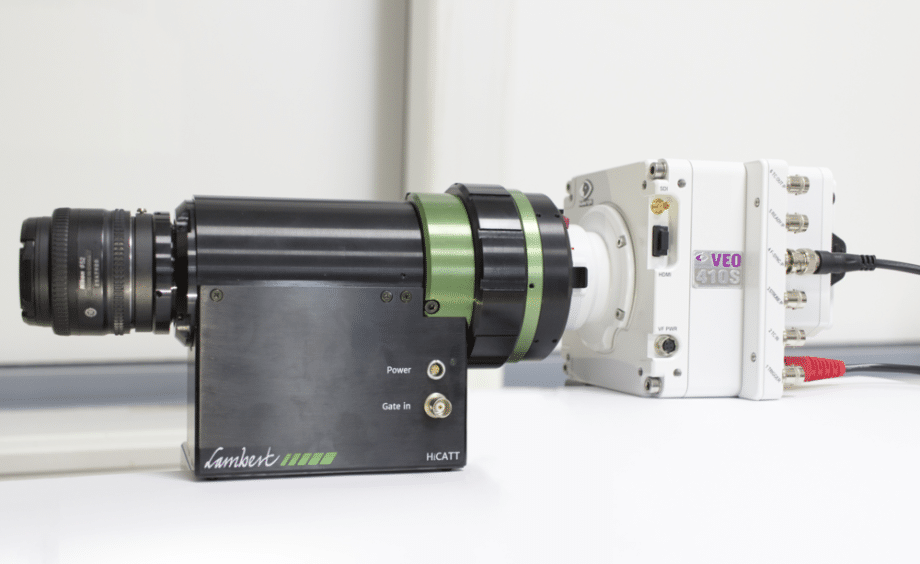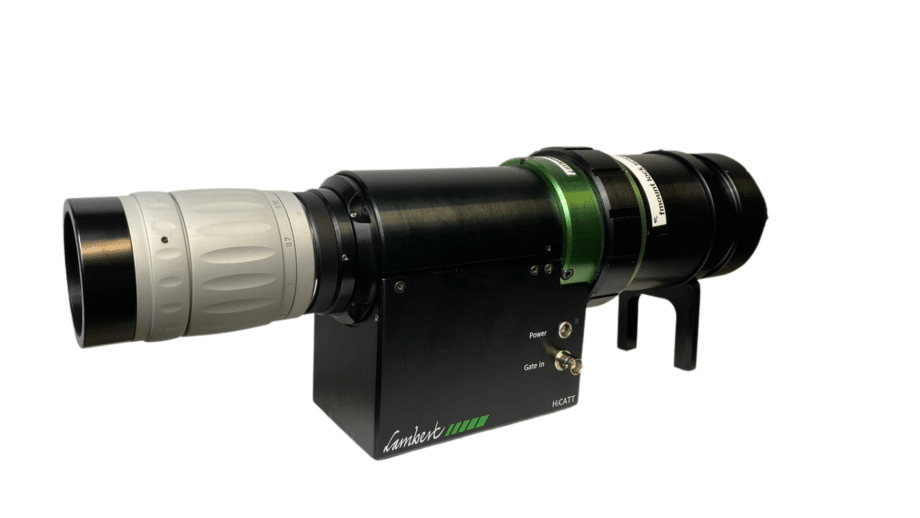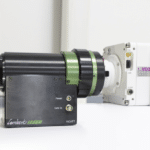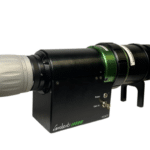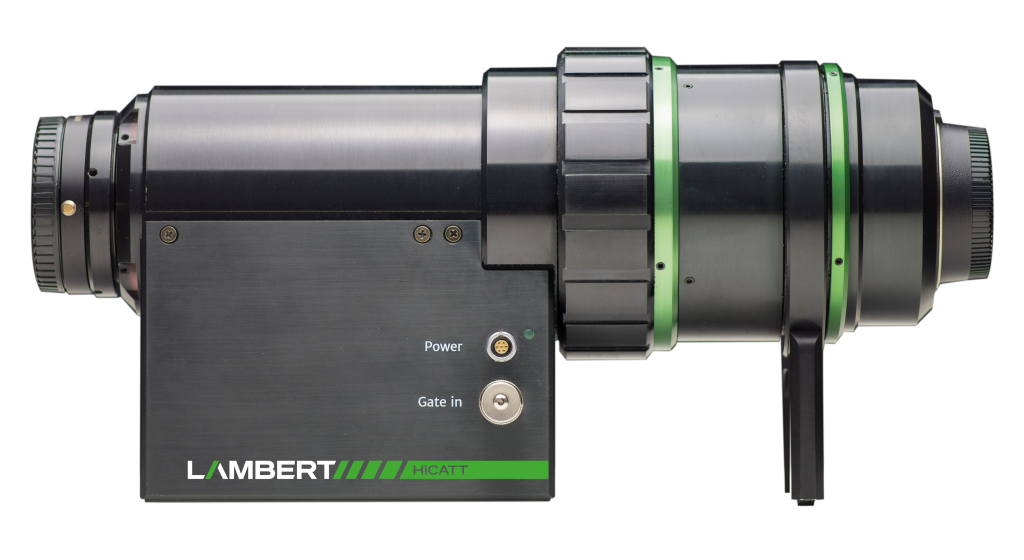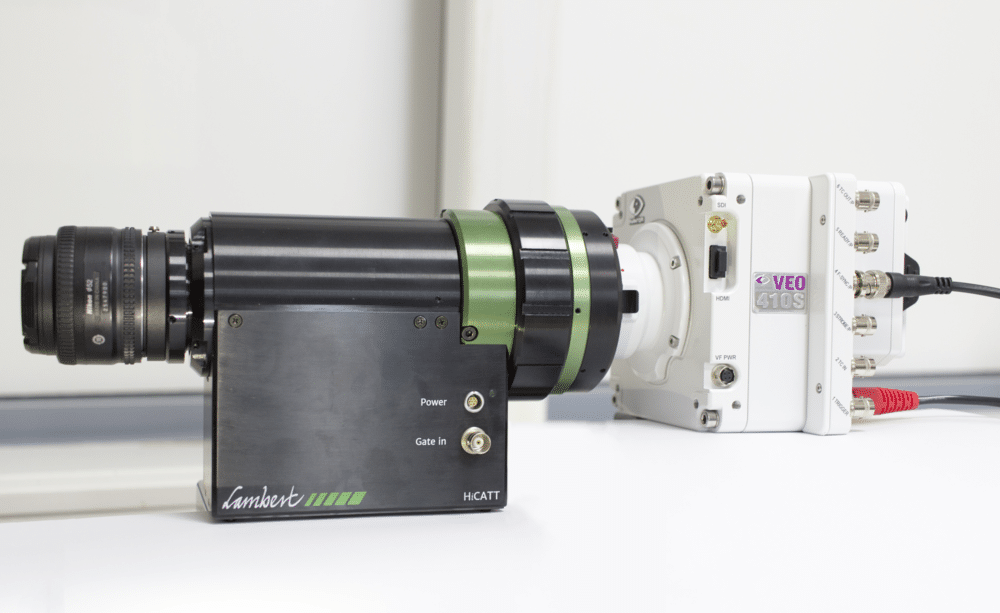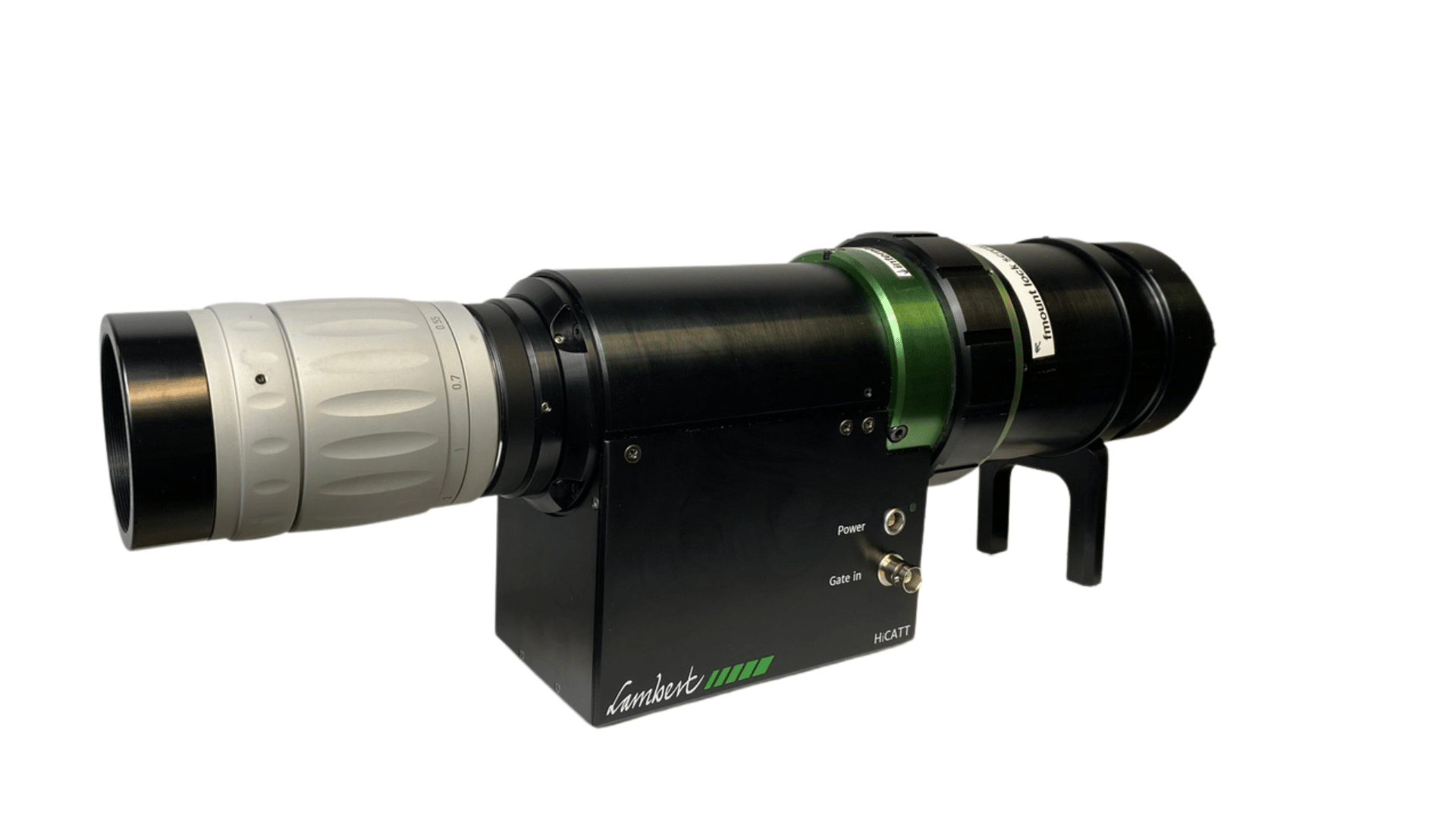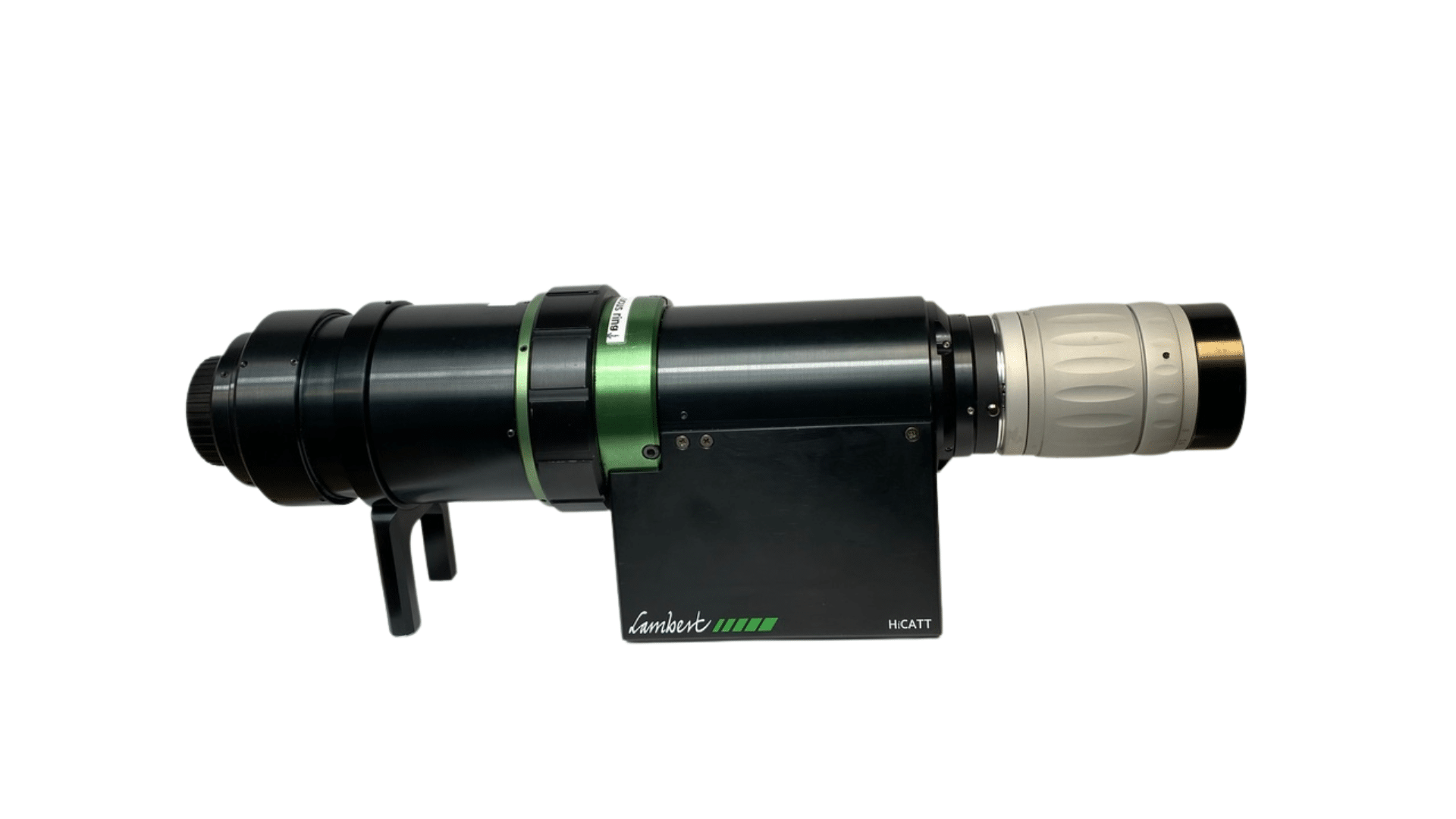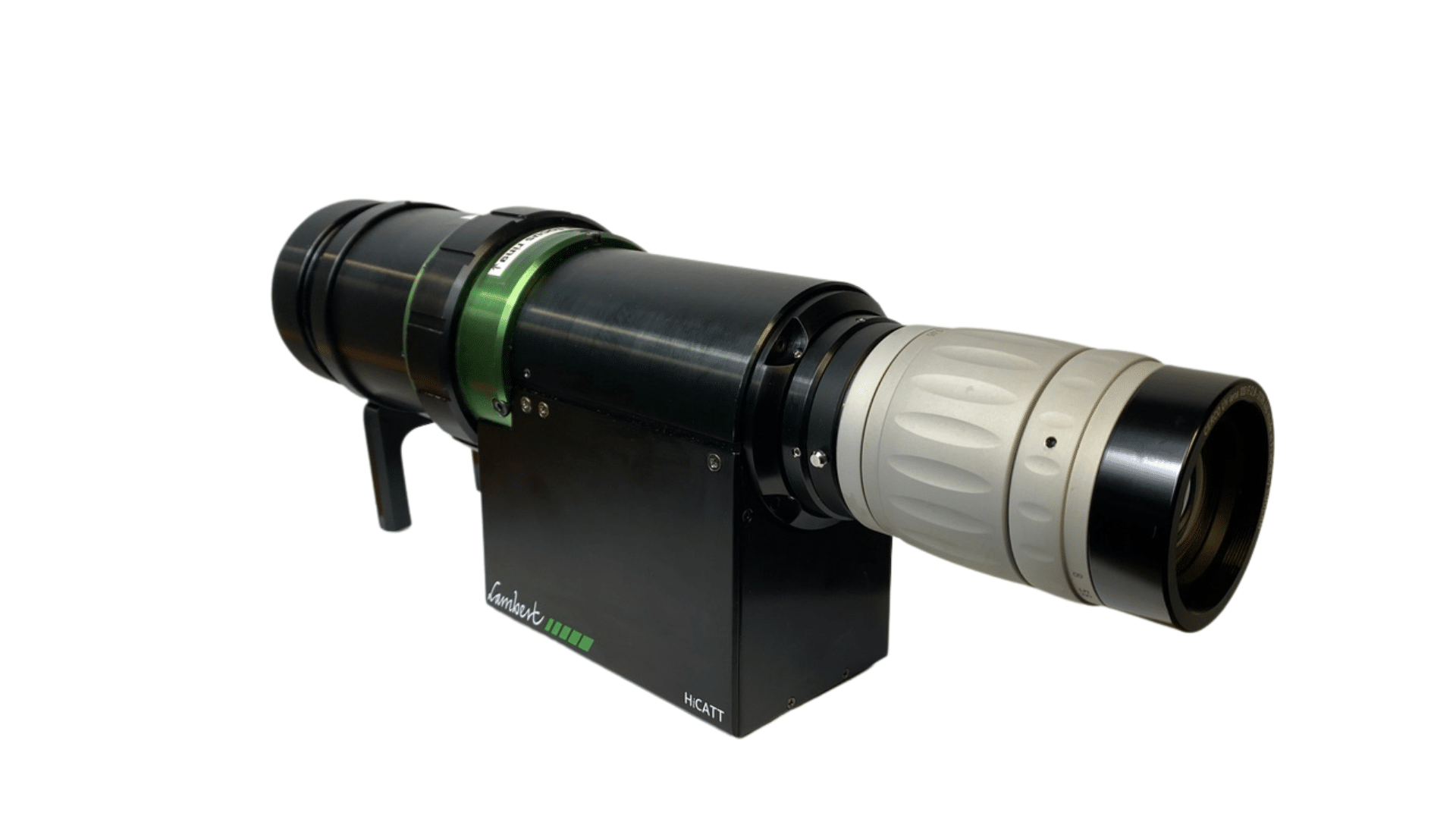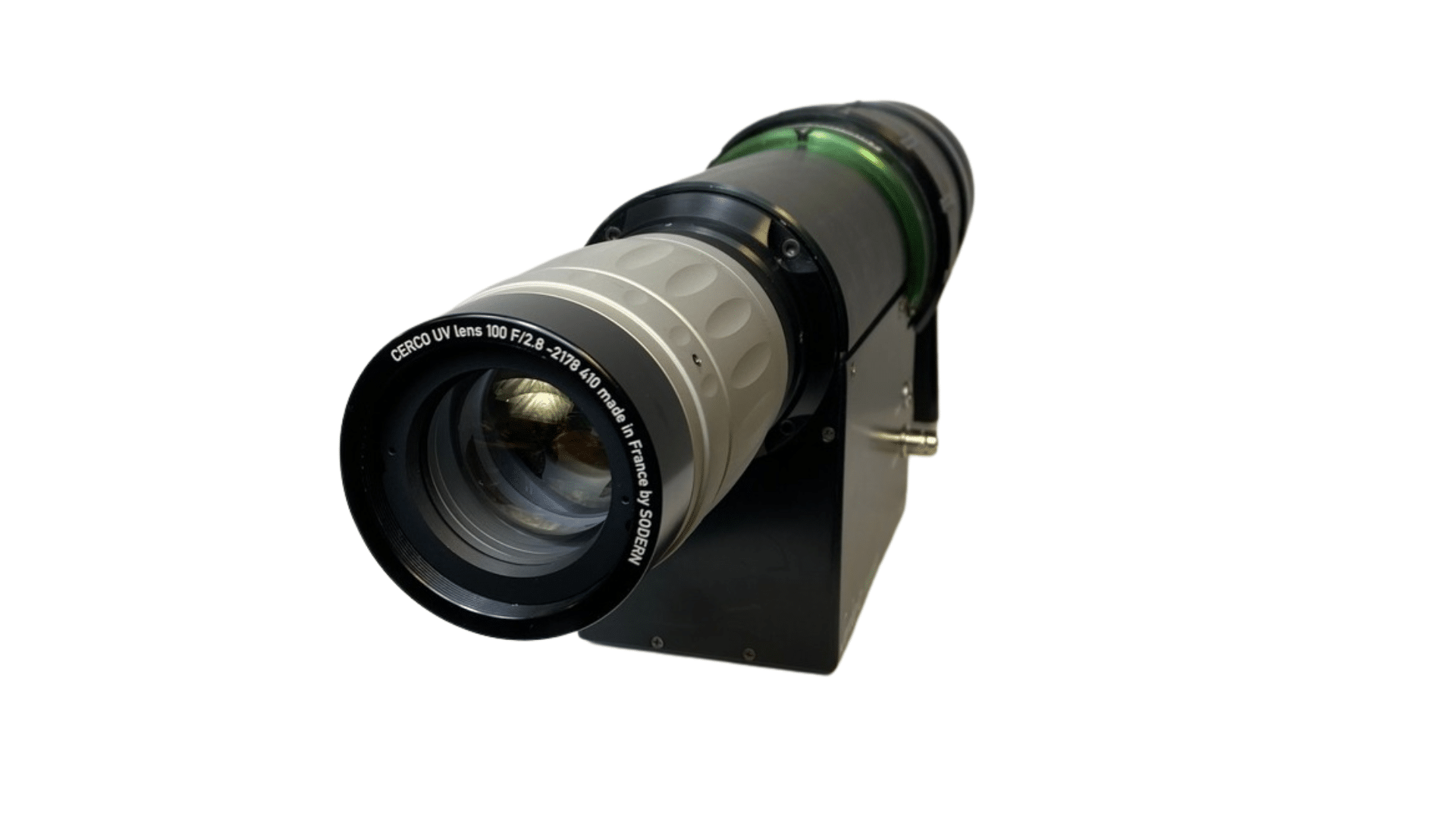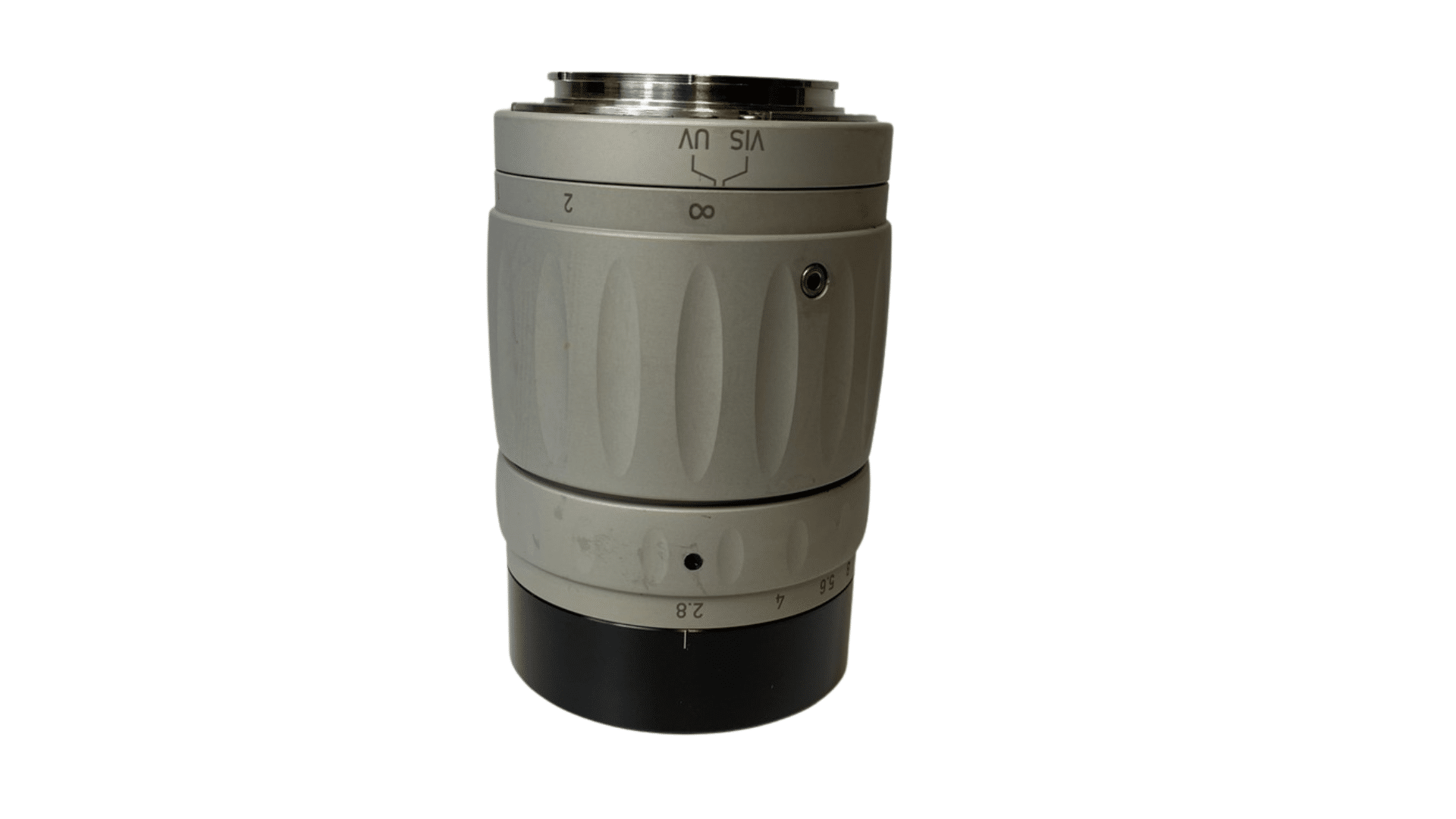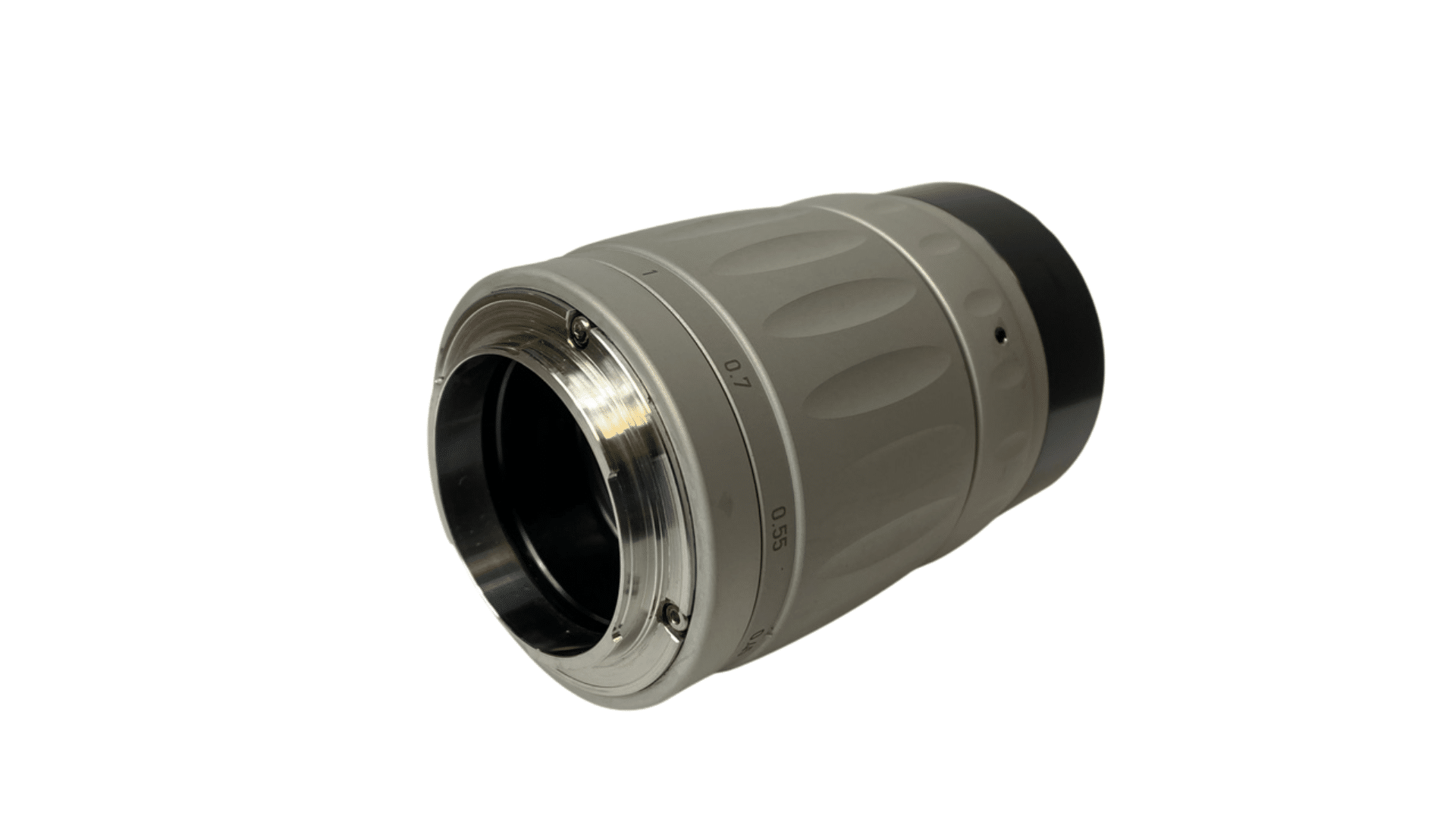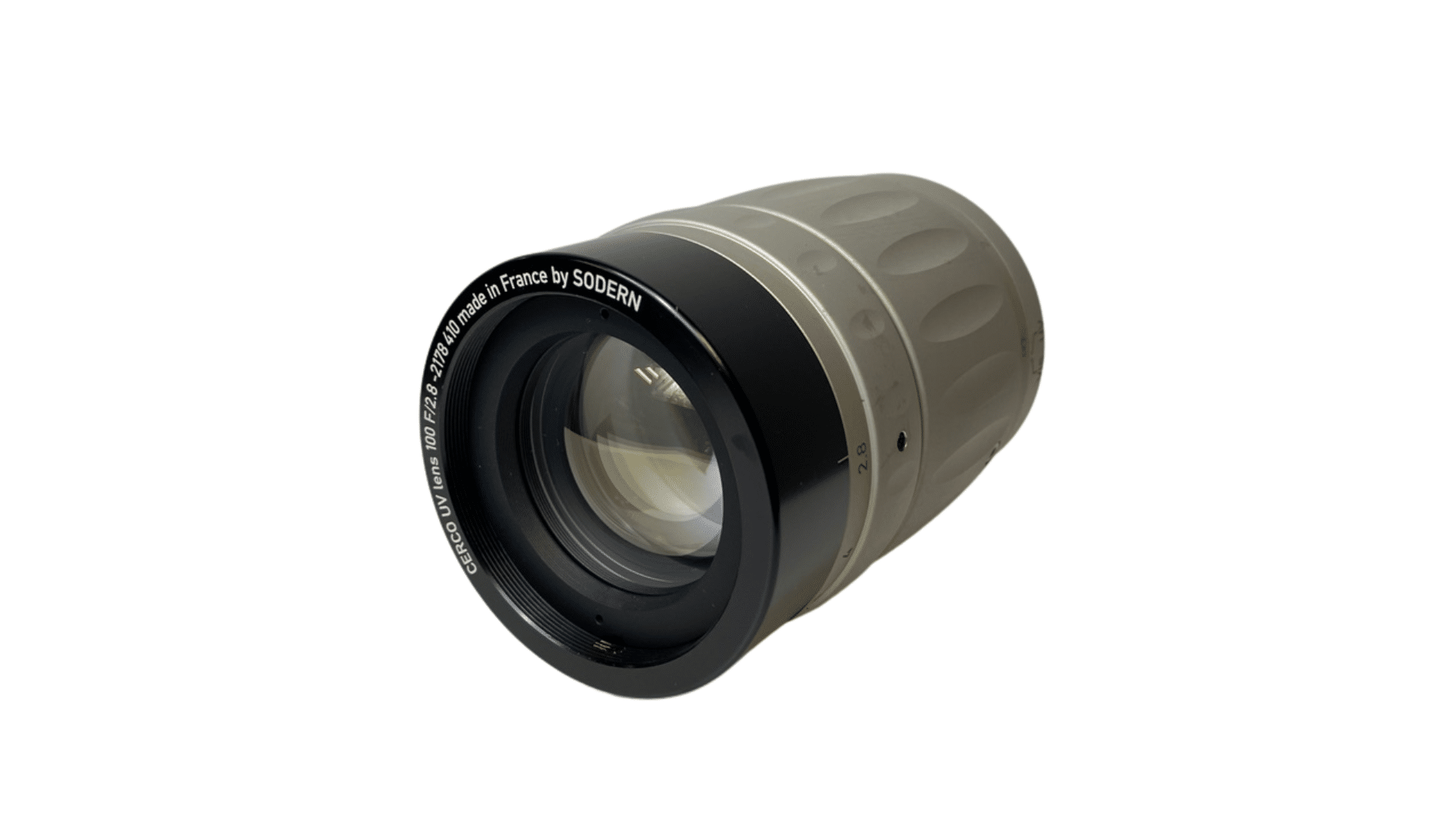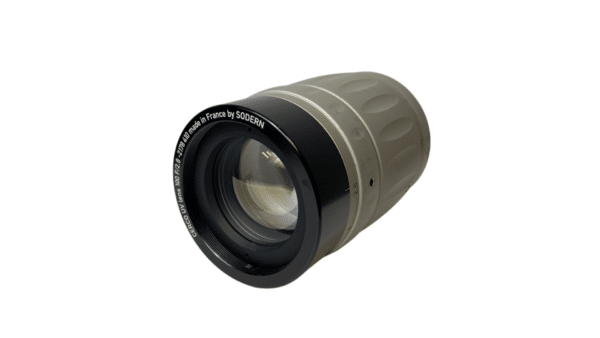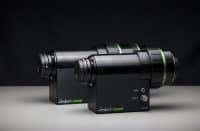HiCATT – Ultra High Speed Intensifier reaching 1,000,000 fps and above
The HiCATT is a high-speed intensifier engineered to work with high-speed and ultra-high-speed cameras (1 MHz and above). It amplifies low light level images by up to 500,000 times, depending on the intensifier tube and wavelength. This enhancement increases the sensitivity of the connected high-speed camera, allowing it to capture clear images in low-light conditions.
Reach higher frame rates, image faster
The below video demonstrates a blue flame emerging from a torch, captured without and with the HiCATT attached to a Vision Research TMX 7150 at 200,000 fps. The image quality at 200,000 fps is significantly improved when using the HiCATT. The 1 MHz version of the HiCATT enables imaging at 1,000,000 fps and above (burst mode).
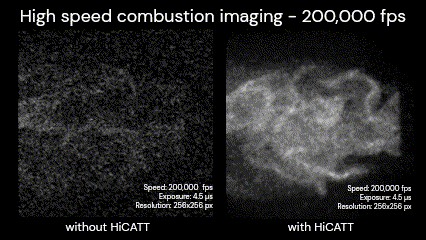
Make your Camera Sensitive to UV light, and Image Combustion
All high-speed cameras are insensitive to UV light because their optical components block UV light from reaching the detector. The HiCATT can convert incoming UV light into visible light at 532 nm, making it detectable by the camera. The following video shows the same flame observed with an OH filter (10 nm bandpass centered around 310 nm) at 100,000 fps. The natural emission of the flame at atmospheric pressure and through the filter emits very low light levels. Despite these conditions, the video demonstrates a satisfactory signal-to-noise ratio (SNR) and image quality. This recording was performed at Axiom Optics Lab in Somerville, MA, USA, using a HiCATT Gen2 1 MHz coupled to a Vision Research TMX 7150 at 100,000 fps, with a 100 mm CERCO UV lens.
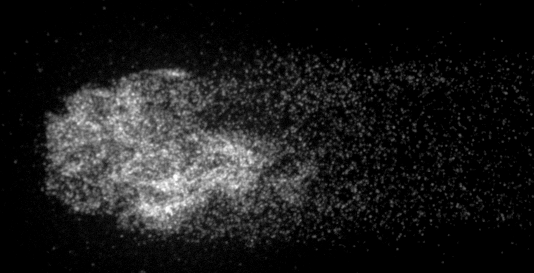
HiCATT Couples to All High-Speed Cameras, Without Special Couplings or Customizations
One of the standout features of the HiCATT high-speed intensifier is its remarkable ability to effortlessly adapt its output focus to any camera and imaging system. This adaptability ensures that the HiCATT delivers sharp, high-quality images across a range of configurations.
The HiCATT high-speed intensifier is designed for seamless integration with all major brand-name high-speed cameras, including Shimadzu, Phantom, Photron, iX Cameras, etc. This is accomplished by the high-quality, robust, and flexible lens coupling on the output. The adaptability of the lens output adjustment results in a coupling without any modifications to the camera. It can be used as is. Whether you’re using a camera equipped with an F-Mount or another compatible configuration, integrating the HiCATT intensifier is a straightforward process.
A Versatile and Customizable High Speed Intensifier
The ultra-high-speed intensifier can operate at repetition rates of up to 1 MHz in continuous mode and 10 MHz in burst mode. Various intensifier control units offer functionalities from analog gain control to full digital control, including an internal trigger generator and programmable gate trains. With a broad selection of Gen II and Gen III image intensifiers, the HiCATT provides high sensitivity down to the single-photon level and the optimal spectral bandwidth for diverse applications. Different models are available, covering a range of spectral sensitivities, phosphors, spatial resolutions, gains, linearities, minimum gate widths, and gating frequencies. Standard models of the HiCATT feature a single MCP in the first-stage image intensifier, with dual MCP image intensifiers available upon request.
High Quality UV lenses from CERCO
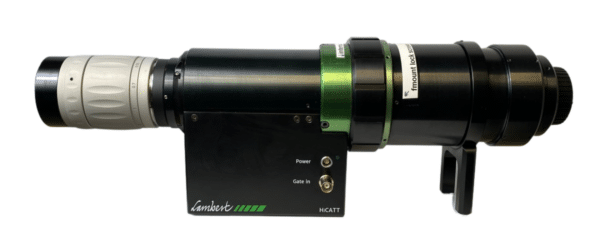
Axiom Optics offers three uv lenses with 28, 45, and 100 mm focal length from CERCO that have been designed for video cameras with image intensifier working with UV light. These UV lenses are usable from ultraviolet to near infrared without focusing adjustment. Two types are proposed: standard multicoated type, optimized from 240 nm to 410 nm wavelength range, and uncoated type, usable from 190 nm to 900 nm. The 100 mm focal length was specifically designed for 25 mm images and therefore is a perfect match for the HICATT 25. Visit the downloads tab for more information on these lenses.
Image Intensifier Layout
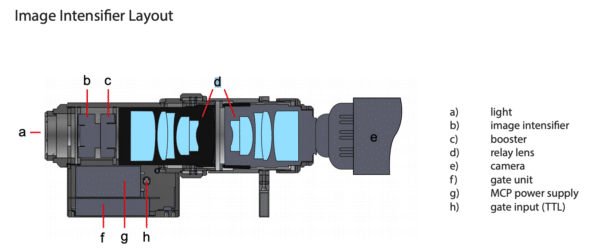
For time-resolved imaging, a gate unit (f) is used together with the image intensifier to yield an electro-optical shutter. The gate unit either generates a high voltage pulse signal or follows an external TTL pulse. The pulse width is variable and follows a TTL input pulse over the range from less than 3 ns to DC at a repetition rate up to 300 kHz.
Spectral response and phosphor decay time
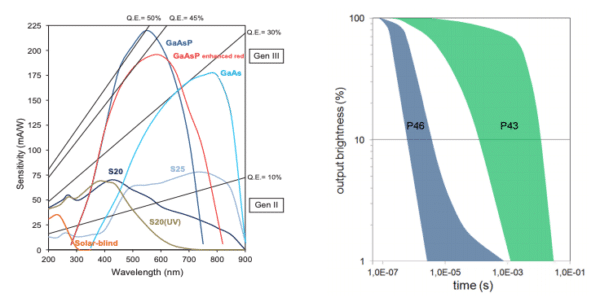
| Phosphor | Efficiency | Decay time to 10% | Decay time to 1% |
| P43 (optional) | 20 photons/e-/kV | 1.5 ms | 3 ms |
| P46 (standard) | 6 photons/e-/kV | 500 ns | 2000 ns |
**P20, P24 and P47 available on request
High Speed Intensifier working principle
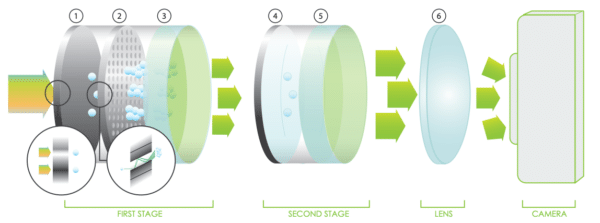
On the photocathode (1), incoming photons are converted into electrons. These electrons are then accelerated in an electric field toward the Multi-Channel Plate (MCP, 2) and collide with the channel walls. Depending on the voltage across the channel, this collision generates multiple electrons through secondary emission. This cloud of electrons is accelerated toward the anode screen (3), where they are reconverted into photons by the phosphor layer. These photons are directed by a fiberoptic faceplate (3) to the entrance of the second stage (booster). In the second stage, photons are again converted to electrons by the photocathode (4) and accelerated to the anode screen (5), where the image is produced. Finally, the relay lens (6) transfers the image from the back of the intensifier onto the mounted camera.
Lambert mechanical shutter
Read our important technical blog posts about the HICATT
– How To Easily Couple Your HiCATT To Your F-Mount Camera
– How to Perform Intensified High-Speed Imaging in Highly Variable Lighting Conditions
– Intensified High-Speed Hydrogen Combustion Imaging Using HiCATT
– Some Common Mistakes When Using A HiCATT High-Speed Image Intensifier
To access our intensified imaging product page, click here.
To visit Lambert Instrument’s (the manufacturer) page, click here.
Photocathodes
The photocathode is the entrance of the image intensifier. This is where the incoming photons are converted to electrons. The quantum efficiency of the photocathode material specifies how efficient this conversion is for each wavelength.
Second generation image intensifiers
The photocathode of a second generation image intensifier can have a quantum efficiency of up to 25%.S25 photocathodes are only available in the 18 mm diameter image intensifiers.
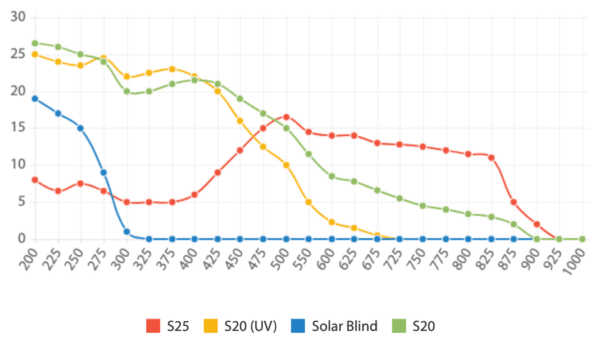
Second generation high QE image intensifiers
The photocathode of a second generation high QE image intensifier can have a quantum efficiency of over 30%. Please note that these image intensifiers are only available with a diameter of 18 mm.
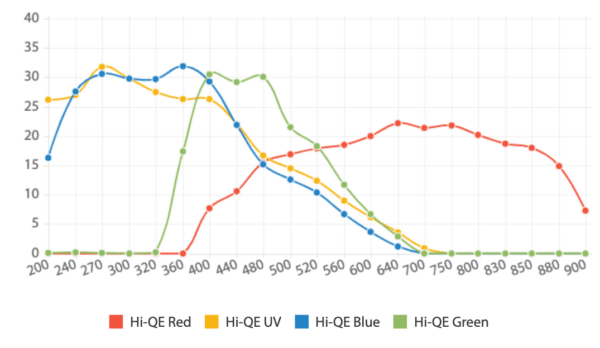
Second generation fast-gated high QE image intensifiers
The photocathode of a second generation high QE image intensifier can have a quantum efficiency of over 25%. Please note that these image intensifiers are only available with a diameter of 18 mm.
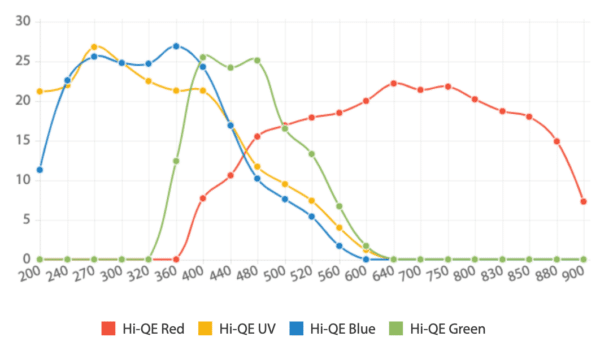
Third generation image intensifiers
The photocathode of a third generation image intensifier can have a quantum efficiency of up to 50%.
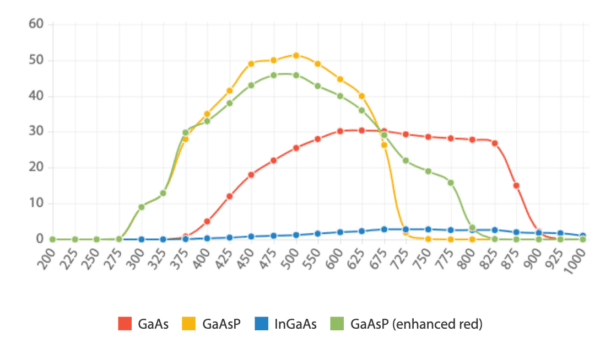
High Speed Combustion Imaging

Researchers around the world use the HiCATT in their combustion studies involving OH* laser-induced fluorescence (LIF) and chemiluminescence. To avoid motion blur and see the detailed structures, a very short exposure time is required. This reduces the light intensity that is detected during each exposure. The HiCATT boosts the light intensity to ensure clear images at high frame rates.

The images on the left show three recordings of a blue gas flame. Image A is a regular recording that shows the general shape of the blue gas flame. But the details are lost due to the long exposure time.
Image B was recorded with a high-speed camera (1000 fps, 1 millisecond exposure time) to reduce motion blur. The image is dim and blurry, but it shows less motion blur than image A.
Image C shows what a flame looks like at 2000 fps with a 15 microsecond exposure time. The HiCATT eliminates motion blur while boosting the intensity of the incoming light to retain image detail.
Other applications
- Super-slow motion combustion research for the automotive industry
- Time-resolved imaging in plasma physics research
- Dynamic phenomena in microscopy
- Laser-Induced Fluorescence (LIF) and especially PLIF ( Planar Laser Induced Fluorescence )
- Time-resolved imaging of fluids for microfluidic research
- Fluorescence Recovery After Photobleaching (FRAP)
- Many other industrial or scientific low-light-level applications in high-speed imaging
CERCO 28 mm UV Lens Data Sheet
CERCO 45 mm UV Lens Data Sheet
CERCO 100 mm UV Lens Data Sheet
Publications using HiCATT
- Injector-coupled transverse instabilities in a multi-element premixed combustor
June 25, 2020 - Ultra high-Speed Imaging of a Propagating Detonation Wave in a High Aspect Ratio Rectangular Channel
Aug 16 2019 (Combustion, OH Chemiluminescence) - Combustion and soot characteristics of hydrotreated vegetable oil compression-ignited spray flames
Jan 28, 2020 (Combustion, OH Chemiluminescence) - Application of femtosecond laser electronic excitation tagging (FLEET) velocimetry in a bladeless turbine
Jan 27, 2020 (Fluorescence, Flow structure) - Experimental study on flame/flow dynamics in a multi-nozzle gas turbine model combustor under thermo-acoustically unstable condition with different swirler configurations
Jan 9, 2020 Combustion, OH Chemiluminescence) - Experimental study on combustion stability characteristics in liquid-fueled gas turbine model combustor: Fuel sensitivities and flame/flow dynamics
Jan 6, 2020 (Combustion, OH Chemiluminescence, PIV) - Combustion Response of Shear Coaxial Injectors to Transverse Combustion Instabilities
Jan 5, 2020 (Combustion, OH Chemiluminescence) - Detonation Dynamics Visualization From Megahertz Imaging
Jan 5, 2020 (OH Chemiluminescence, PIV) - Effects on performance, combustion and pollutants of water emulsified fuel in an aeroengine combustor
Dec 12, 2019 (OH Chemiluminescence, Combustion) - Simultaneous TR-PIV and CH* Chemiluminescence During Combustion-Instability Triggered Flame-Flashback in a Backward Facing Step Combustor
Nov 5, 2019 (Combustion, OH Chemiluminescence) - The Role of Mean Flame Anchoring on the Stability Characteristics of Syngas, Synthesis Natural Gas, and Hydrogen Fuels in a Turbulent Non-Premixed Bluff-Body Combustor
Nov 5, 2019 (Combustion, OH Chemiluminescence) - Measurement of the 3D Rayleigh index field via time-resolved CH* computed tomography
Oct 23, 2019 (OH Chemiluminescence, Combustion) - Syngas Combustion Dynamics in a Bluff-Body Turbulent Combustor
Oct 15, 2019 (Combustion, OH Chemiluminescence) - Effect of the fuel-air flow velocity on heat release rate of swirling non-premixed methane flames
Oct 10, 2019 (Combustion, OH Chemiluminescence, Flame Research) - On the influence of wall distance and geometry for high-pressure n-dodecane spray flames in a constant-volume chamber
Sep 17, 2019 (Combustion, Flame Research, Diesel Sprays) - Phase-Opposition Control of the Precessing Vortex Core in Turbulent Swirl Flames for Investigation of Mixing and Flame Stability
Sep 16, 2019 (Combustion, PIV, Flame Research) - The Effects of Chemical Kinetic Effects on Detonation Wave Generation in a Semi-Bounded Channel
Aug 16, 2019 (Combustion) - Development of a Turbine-integrated High-pressure Optical RDE (THOR) for injection and detonation dynamics assessment
Aug 16, 2019 (Combustion, OH Chemiluminescence) - Effects of Emulsified Fuel on the Performance and Emission Characteristics of Aeroengine Combustors
Aug 1, 2019 (Combustion) - Optical Measurements of In-flame Soot in Compression-ignited Methyl Ester Flames
Jul 5, 2019 (Combustion, OH Chemiluminescence) - Excitation of the precessing vortex core by active flow control to suppress thermoacoustic instabilities in swirl flames
Jul 4, 2019 (Combustion, OH Chemiluminescence, Flame Research) - Demonstration of a cost-effective single-pixel UV camera for flame chemiluminescence imaging
Jun 10, 2019 (Combustion, OH Chemiluminescence) - Effects of fuel variation and inlet air temperature on combustion stability in a gas turbine model combustor
May 28, 2019 (Combustion) - Flame/flow Dynamics in a Multi-nozzle Gas Turbine Model Combustor Under Thermo-acoustically Unstable Condition
May 18, 2019 (Combustion, OH Chemiluminescence) - Excitation of high frequency thermoacoustic oscillations by syngas in a non-premixed bluff body combustor
May 3, 2019 (OH Chemiluminescence, Flame Research, Combustion) - Development of a modular, high-speed plenoptic-camera for 3D flow-measurement
Apr 25, 2019 (3D Flow-Measurement, PIV) - Simultaneous high-speed SO2 PLIF imaging and stereo-PIV measurements in premixed swirling flame at 20 kHz
Apr 1, 2019 (Combustion, PIV, Flame Research) - Combined study by direct numerical simulation and optical diagnostics of the flame stabilization in a Diesel spray
Mar 11, 2019 (Combustion, Flame Research) - High-repetition-rate burst-mode-laser diagnostics of an unconfined lean premixed swirling flame under external acoustic excitation
Feb 26, 2019 (Combustion, Flame Research, PIV) - Effect of syngas composition on high frequency combustion instability in a non-premixed turbulent combustor
Feb 5, 2019 (OH Chemiluminescence, Combustion, PIV) - Time-Resolved 3D Flow-Measurement with a Single Plenoptic-Camera
Jan 14, 2019 (3D Flow-Measurement) - Wave Dynamic Mechanisms in Coaxial Hydrogen/Liquid-Oxygen Jet Flames
Dec 24, 2018 (Combustion, Flame Research, OH Chemiluminescence)
Intensifier Control Software
The small window size of the Intensifier Control software (shown below), easily allows you to use this software and any image capture and control software of an attached camera simultaneously. The main window (left) of the software shows the most used functions during normal operation. The settings window (right) is used to set the trigger method and configure the function for the Enable connector of the Intensifier gate generator.
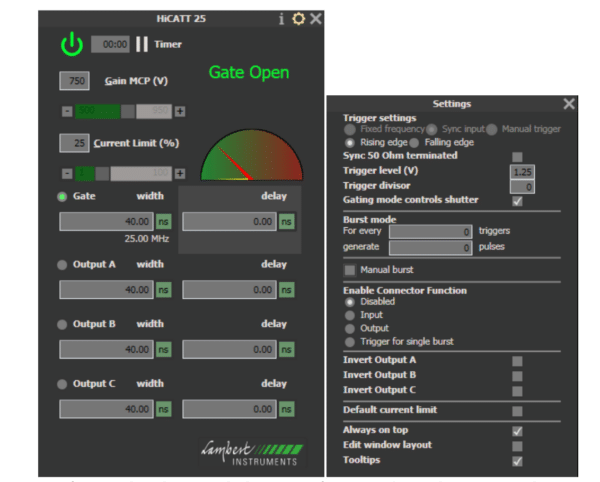
Capture Software
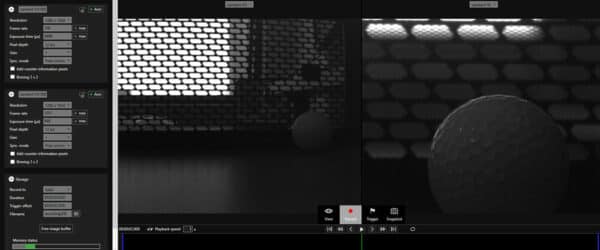
HiCATT Options
- Diameter : 18 or 25 mm
- Phosphors ( P46, P47)
- Photocathodes (S20 UV, S20, S25, Hi-QE Green, Hi-QE Blue, Hi-QE Red, GaAs, GaAsP, red enhanced GaAsP)
- Relay optics ( 1:1, 2:1, 3:1)
- Gating units ( 40 ns @ 100 KHz, 2 ns@ 300 Khz, 25 ns @ 1 MHz )
- Intensifier USB control units ( gain control DG, gate control GC, gate generator GG, programmable gate GG-PP)
HiCATT Accessories
- Mounting Plate
- C-Mount and F-Mount Adapters
- Interchangeable relay lenses
- Mechanical Shutter with interlock for extra intensifier tube safety
- High Speed Cameras

